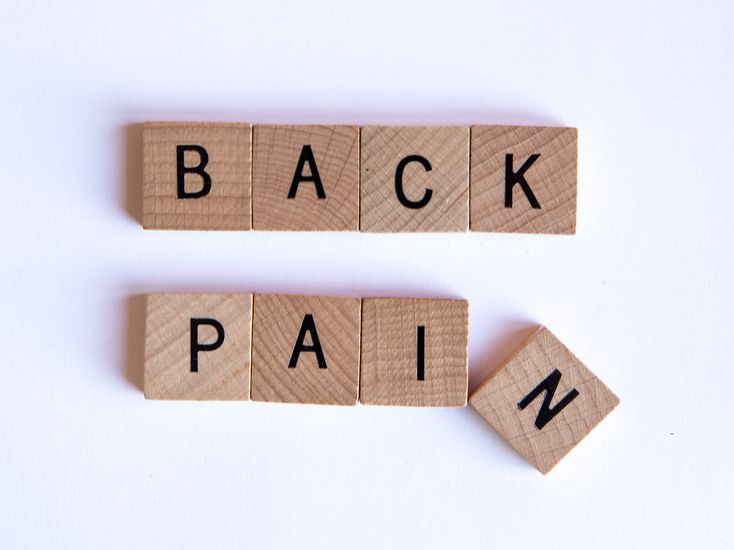Aanzienlijke kostenbesparing bij patiënten met chronische rugpijn na multidisciplinaire behandeling

English translation below
Chronische rugpijn kenmerkt zich door aanhoudende pijn in de lage rug. Een aandoening die moeilijk te behandelen is. Naast fysieke factoren, zoals problemen in spieren, pezen, gewrichtkapsels of tussenwervelschijven, spelen ook psychologische en sociale factoren een belangrijke rol. Hierbij gaat het bijvoorbeeld over het omgaan met grenzen, angst voor bewegen, gebruik van medicatie, het hebben van een baan of psychische aandoeningen. Chronische rugpijn is een groot probleem. Patiënten scoren op de kwaliteit van leven zelfs lager dan patiënten met reuma of kanker.
De sociale gevolgen voor de patiënt en de maatschappij zijn groot. De patiënt zoekt vaak lang door in het zorgcircuit naar een passende oplossing voor de klachten. Dit kan leiden tot onduidelijkheid bij patiënten en verdere achteruitgang van de klachten. Daarnaast leidt het tot hoge kosten (de totale maatschappelijke kosten bedragen in Nederland jaarlijks ongeveer 4 miljard euro).
Multidisciplinaire behandeling
Om een zo goed mogelijke oplossing te vinden voor patiënten is in 2007 het Wervelkolomcentrum van het UMCG opgericht, dat recent is overgegaan in het UMCG Pijncentrum. In dit centrum wordt structureel samengewerkt door verschillende specialisten. Patiënten worden gezien door een physician assistant, een revalidatiearts en/of anesthesioloog. Wanneer nodig worden ook orthopeed, neuroloog of neurochirurg geconsulteerd. De zorg is er sterk op gericht om de kwaliteit van leven van deze groep van patiënten te optimaliseren en de patiënt handvatten aan te reiken voor betere zelfzorg na de behandeling.
Het onderzoek
In dit onderzoek hebben we onderzocht of patiënten na een behandeling bij het pijncentrum minder zorg zijn gaan gebruiken dan voorheen, als indicator voor een betere zelfzorg na de behandeling. We volgden 997 patiënten gedurende 5 jaren. Het blijkt dat patiënten het tweede jaar na de behandeling 21 tot 34% minder zorgkosten maakten dan voordat ze werden aangemeld bij het Pijncentrum. De totale rug-gerelateerde kosten daalden van gemiddeld €1544,- één jaar voor het pijncentrum naar €1163,- twee jaar na het pijncentrum. Dit was wel afhankelijk van factoren als nevenaandoeningen, leeftijd, geslacht, mate van pijn en welbevinden. We kunnen concluderen dat naast het effect in gezondheid en functioneren dat patiënten met chronische rugpijn ervaren na behandeling, we ook een maatschappelijke functie ondersteunen in het terugdringen van de zorgkosten op langere termijn. Het onderzoek is uitgevoerd door een multidisciplinaire onderzoeksgroep van pijn, revalidatie, anesthesiologie, chirurgie en gezondheidseconomische specialisten en is recent gepubliceerd in het medische tijdschrift Spine.
Link naar de studie: https://journals.lww.com/spinejournal/Abstract/9000/Can_We_Change_Health_Care_Costs_in_Patients_With.94183.aspx
Voor meer informatie kunt u contact opnemen met dr. Remko Soer, r.soer umcg.nl
Significant cost savings in patients with chronic back pain after multidisciplinary treatment
Chronic back pain is characterized by persistent low back pain. A condition that is difficult to treat. In addition to physical factors, such as problems in muscles, tendons, joint capsules or intervertebral discs, psychological and social factors also play an important role. This concerns, for example, dealing with boundaries, fear of movement, use of medication, having a job or mental illness. Chronic back pain is a major problem. In terms of quality of life, patients score even lower than patients with arthritis or cancer.
The social consequences for the patient and society are significant. The patient often searches the care circuit for a long time to find a suitable solution for the complaints. This can lead to confusion in patients and further deterioration of the complaints. In addition, it leads to high costs (the total social costs in the Netherlands are approximately 4 billion euros annually).
Multidisciplinary treatment
In order to find the best possible solution for patients, the Spine Centre (Wervelkolomcentrum) of the UMCG was established in 2007, which has recently been transferred to the UMCG Pain Centre. In this centre there is structural collaboration by various specialists. Patients are seen by a physician assistant, a rehabilitation physician and/or anaesthesiologist. If necessary, an orthopedist, neurologist or neurosurgeon will also be consulted. The care is strongly aimed at optimizing the quality of life of this group of patients and providing the patient with handles for better self-care after treatment.
The study
In this study, we researched whether patients after treatment at the pain centre started using less care than before, as an indicator for better self-care after treatment. We followed 997 patients over 5 years. It appears that in the second year after treatment, patients had 21 to 34% less healthcare costs than before they were registered at the Pain Centre. Total back pain-related costs declined from an average of € 1,544 one year before the pain centre to € 1,163 two years after the pain centre. This did depend on factors such as side effects, age, gender, degree of pain and well-being. We can conclude that in addition to the effect on health and functioning that patients with chronic back pain experience after treatment, we also fill in a social function in reducing healthcare costs in the longer term. The study was conducted by a multidisciplinary research group of pain, rehabilitation, anesthesiology, surgery and health economics specialists and was recently published in the medical journal Spine.
Link tot he study: https://journals.lww.com/spinejournal/Abstract/9000/Can_We_Change_Health_Care_Costs_in_Patients_With.94183.aspx
For more information you can contact dr. Remko Soer, r.soer@umcg.nl



